Contents
Raspberries are considered one of the most popular fruit bushes. Every gardener wants to get a big harvest, and what could be better than harvesting twice a year? It is this dream that can be realized by planting remontant raspberries. A feature of all these varieties is just fruiting twice a year. In this article, we will consider the features of the remontant raspberry variety, the nuances of growing, planting and care.
Features of remontant raspberry varieties
Remontant raspberry is a collective name that combines several species. The main feature of all these varieties is that they are able to bear fruit twice a year, both on annual and biennial shoots.
Outwardly, such a raspberry bush looks like an ordinary raspberry and is no different from it. With proper care, a crop from such a bush can be harvested twice a summer. However, if you neglect the basic rules of care, then this property may be lost and the bush will bear fruit as usual – once a season. If the care is insufficient or weak, the preservation of a double crop is possible, but the quality of the second wave will be much worse. This is because all the forces, as well as nutrients, go to the first harvest, which ripens at the end of June. But the second harvest will already be represented by small and dryish berries, which, moreover, will be in much smaller quantities.
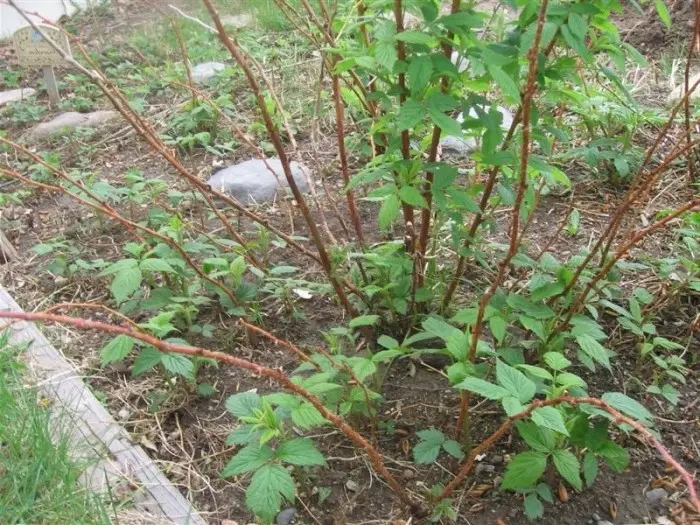
A necessary condition for the care of such varieties is considered to be timely pruning, feeding and watering, since it is to these processes, after planting a seedling, that remontant raspberries are very demanding.
Also, the yield directly depends on the breeding variety. Combining and experimenting with the varieties that you will plant in your garden plot, as well as not forgetting the basic rules of agricultural technology for raspberries, it is possible to get an excellent harvest, both in terms of taste and volume.
With proper care, these raspberry varieties can yield from 1,7 to 3,7 kg of fruit from one raspberry bush. The most fruitful varieties are Atlant, Ruby Necklace, Bryansk Divo, Eurasia, Hercules, Elegant. And the least productive varieties of remontant raspberries include Babie Leto and Brilliantovaya.
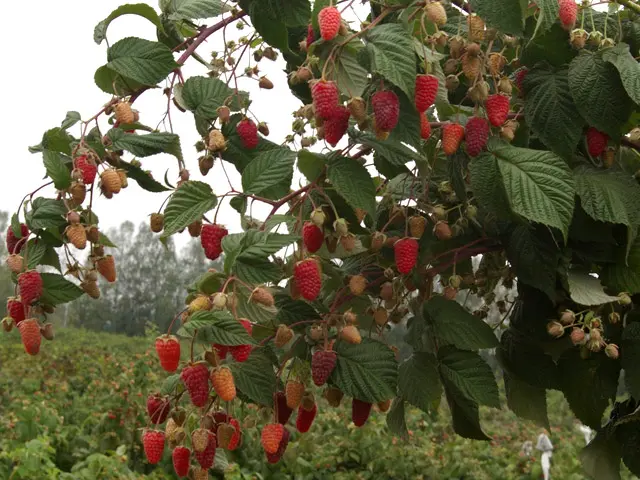
The following indicators influence the yield of this plant:
- the number of fruitful shoots on one bush;
- the number of berries on one shoot;
- average fruit weight;
- the number of berries on one bush that had time to ripen before the onset of frost in the fall;
- weather conditions that were at the time of the growing season, as well as its duration.

Another feature of such raspberries is that it is very difficult to propagate it in traditional ways. A relatively moderate number of replacement shoots and offspring of the roots to a certain extent simplifies care, but at the same time significantly reduces the amount of planting material. But this problem is completely solvable with the help of certain agricultural practices that can significantly speed up this process.
To do this, in early spring or autumn, in the second or third year after planting, very carefully remove its central part from the bush (approximate diameter is about 10-15 cm). As a result, about two dozen seedlings of excellent quality are formed from the roots remaining in the soil.
Also, good results can be obtained when propagating with a green cutting. But in this situation, on the green handle there should be a part that had previously grown underground (etiolated or bleached zone). Such cuttings begin to be prepared in early summer or late spring.
When breeding and planting repair raspberries, it is necessary to take into account the fact that the formation of buds on the roots, as well as their awakening, are not simultaneous processes.
Offspring also appear at different times. Therefore, cuttings are harvested at different times.
Remontant raspberries gained their popularity not only due to the fact that they are able to bear fruit twice a season, but also because they are devoid of the shortcomings that ordinary raspberries have.

Advantages of remontant raspberry varieties:
- a one-year growth cycle of the aerial part is characteristic;
- the fruitful part of the shoot grows in one year;
- the crop is formed already in the first year after planting;
- higher resistance to various diseases and pests;
- fruits are also highly resistant to various diseases. On the shoot it is almost impossible to find a wormy or rotten berry;
- there is no need for chemical treatment of the plant, which saves not only money, but also time;
- due to the very high resistance to diseases and pests, as well as the absence of the need for disinfection, these varieties produce an environmentally friendly crop;
- fruits have many beneficial properties and can be eaten by both children and adults suffering from certain types of diseases.
In the process of caring for the plant, shoots that have already borne fruit must be cut off at soil level. After that, the cut shoots are taken out of the garden and destroyed. This must be done in order to prevent future infection of neighboring plants with various diseases and pests. Various pathogens and pests can overwinter on the shoots.
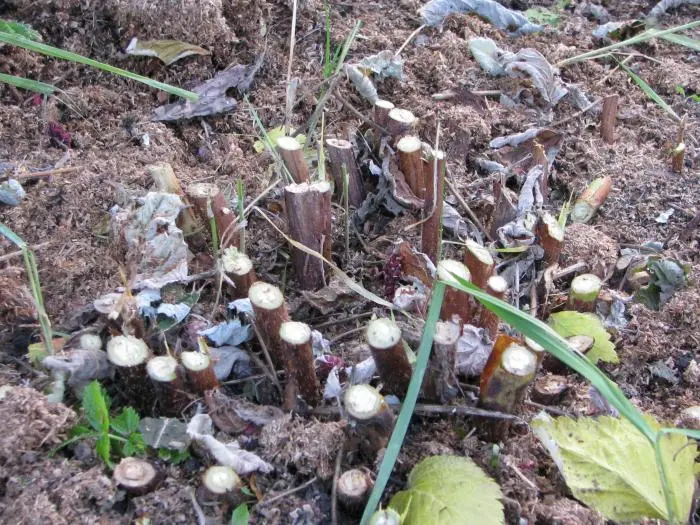
The plant hibernates only with the root part, since its upper part is cut off for the winter. The root system is highly frost-resistant, so even with severe frosts (about – 20 оC) He doesn’t freeze. Thanks to this property, remontant raspberries do not need shelter for the winter.
Such features of the growth of raspberries can significantly save time in the spring, which, when growing ordinary raspberries, is spent on tying to the trellis and bending down the shoots.
Harvesting is carried out both at the end of summer and at the beginning of autumn. The period of consumption of fresh fruits grown on this plant is significantly increased due to the peculiarities of its cultivation. Fresh berries keep longer. It is much more pleasant to eat fresh berries than processed ones in the form of jams or jams.
For comparison, fresh berries of ordinary raspberries are stored for only about three weeks, but the fruits of remontant varieties are stored for up to two months.
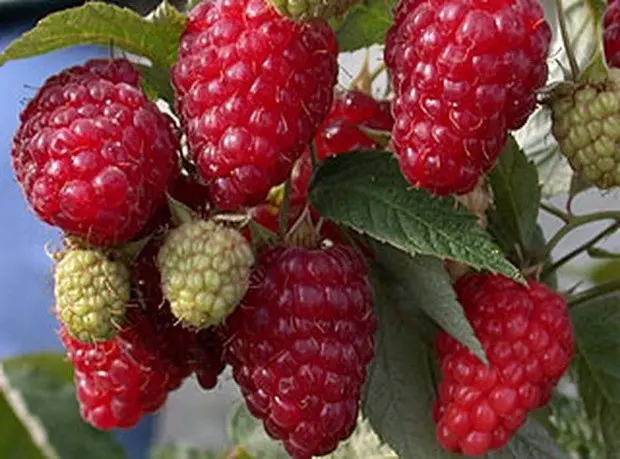
Another feature of remontant raspberries is that the fruits ripen when ordinary raspberries have already fructified.
Given all of the above, we can safely conclude that remontant raspberries will be more preferable for growing in the garden. In order to enjoy your favorite berries throughout the summer, you can grow both ordinary and remontant varieties of raspberries. Your garden will benefit from this.
Landing
In order for your remontant raspberry not to turn into an ordinary one during the growth process and delight you with its double crops, it is necessary to follow the agrotechnical rules regarding planting this plant.
Remontant raspberry is considered a very demanding plant for its planting conditions. It is especially sensitive to such parameters of the landing site as lighting, nutrition and heat. Not the last place for the normal development of such raspberries is occupied by the correctly chosen place of future growth, as well as pre-planting soil preparation.
Planting remontant raspberries must be carried out in a place that is very well and illuminated by the sun throughout the day, and also where there are no drafts and the soil warms up enough during the day.

The most suitable place for planting remontant raspberries is the south side of the garden, near buildings (houses, barns or fences). But where the shadow does not fall on the plant. Due to the presence of a fence, it is possible to form a certain microclimate, which will only benefit the fruit bush.
Deadlines
In terms of planting, this raspberry does not differ from ordinary varieties. Planting seedlings or cuttings is carried out in spring or autumn.
In the case when an autumn planting of remontant raspberries is carried out, the weather must be warm so that the plant has time to take root.
The condition of their root system affects the planting time of seedlings. If it is open, then such seedlings should be planted in autumn or early spring before the start of the growing season. If the seedling has a closed root system, then they can be planted throughout the growing season from spring to late autumn.
Such terms are due to the fact that the closed type root system quickly forms both a powerful root system and the aerial part, making it possible to ripen the crop as early as three months after planting.
Depth and density
Remontant raspberry seedlings should be planted in a planting pit 30 cm deep and also 30 cm in diameter. At the same time, you can find information that the required depth of the pit should be 50 cm.
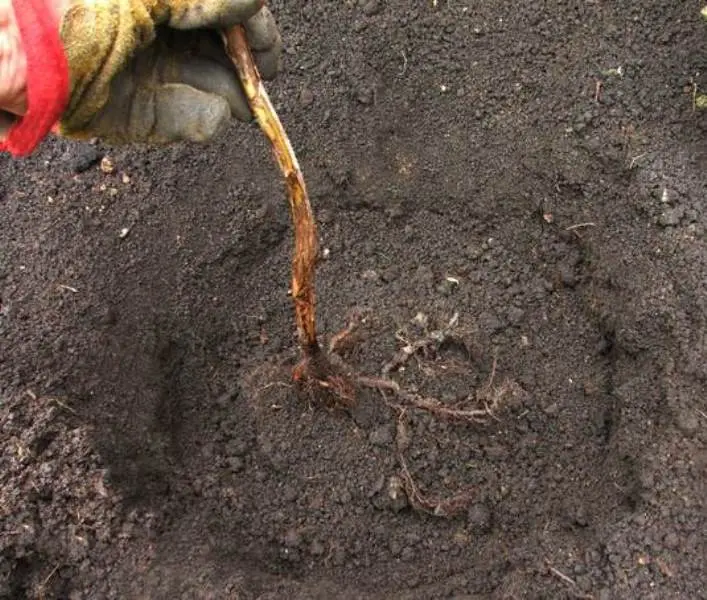
If you intend to plant raspberry bushes in rows, then in this case the planting density should not be very crowded – you need to keep a distance of at least one meter between the seedlings. At the same time, the distance between the rows of raspberries should be 1,5-2 meters. This is the minimum necessary distance to prevent infection of plants and ensure their normal ventilation. Before planting, the bottom of the pit is filled with organic fertilizers.
Video “Repair raspberry”
In this video, you can visually get acquainted with this type of raspberry, and the features of its growth in Our Country.
Repair raspberries, with proper planting and proper care, can be both an excellent alternative to conventional varieties, and an excellent addition to them.









